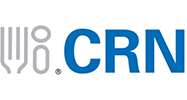Washington, D.C. — The Council for Responsible Nutrition (CRN) today announced the publication of three new and updated chapters in its Vitamin & Mineral Safety, Fourth Edition (VMS4) series—expanding the supplement industry’s most comprehensive, science-based resource on nutrient safety.
The latest updates include:
- A new safety evaluation for choline and citicoline, essential nutrients for brain and liver health;
- A new chapter on lutein, zeaxanthin, and meso-zeaxanthin, the carotenoids associated with vision and eye health; and
- An updated folate chapter that retains the current tolerable Upper Intake Level (UL) for folate but introduces a new section on methylfolate, the biologically active form of folate.
These additions underscore CRN’s commitment to transparency, rigorous science, and global harmonization in nutrient safety evaluation and give consumers, healthcare practitioners, and industry added confidence that these ingredients, when used at the suggested levels, are safe.
New Chapter on Choline and Citicoline
For the first time, CRN has published a safety review of choline and citicoline, nutrients critical for brain function, liver metabolism, and cell membrane integrity.
Based on data from more than 20 human clinical trials, and consistent with prior evaluations by the Institute of Medicine (IOM), CRN reaffirmed the IOM’s UL of 3,500 mg per day for choline and derived a new supplemental UL of 2,000 mg per day for citicoline.
The chapter also reviews recent observational studies exploring possible links between choline intake and cardiovascular disease (CVD) outcomes. After assessing these data and their confounding variables, CRN determined that a clear relationship between dietary choline intake and CVD outcomes cannot be established from the current body of evidence.
“This new chapter closes a long-standing gap in nutrient safety guidance,” said Andrea Wong, Ph.D., Senior Vice President, Scientific & Regulatory Affairs, CRN. “Choline and citicoline play vital roles in cognition, liver health, and metabolism—and the evidence confirms their safety when consumed at reasonable supplemental levels.”
New Chapter on Eye-Health Carotenoids
CRN’s new lutein, zeaxanthin, and meso-zeaxanthin chapter represents the first unified evaluation of this trio of xanthophyll carotenoids—key compounds in maintaining eye health and visual performance.
Building upon CRN’s earlier risk assessment for lutein (Shao and Hathcock, 2006), the updated review draws from approximately 75 human clinical trials and global evaluations by the Joint FAO/WHO Expert Committee on Food Additives (JECFA) and the European Food Safety Authority (EFSA).
No serious adverse effects were identified across studies, even at doses far exceeding typical dietary intakes. The only benign observation, carotenoderma (temporary skin yellowing) when the compounds are ingested at very high doses, was temporary and was not considered adverse.
Based on the available data, CRN maintained the Highest Observed Intake (HOI) of 22 mg per day for lutein previously established in 2006, and established an HOI of 26 mg per day for zeaxanthin and 17 mg per day for meso-zeaxanthin.
“This chapter offers the most updated picture of the clinical safety of lutein, zeaxanthin, and meso-zeaxanthin,” added Wong. “It affirms these bioactives’ strong safety record and their important contribution to visual health.”
Updated Folate Chapter Adds Methylfolate Section
CRN has also released a revised folic acid chapter, reaffirming the existing UL of 1 mg per day for folic acid while introducing a new section on methylfolate (5-MTHF)—the active form increasingly featured in supplements and fortified foods.
The updated review synthesizes the latest findings on the safety, metabolism, and bioavailability of methylfolate, establishing a UL of 1.5 mg per day.
“Our updated folate chapter provides clarity for today’s market,” said Wong. “By distinguishing folic acid and methylfolate, CRN is helping ensure safety standards keep pace with innovation.”
Continuing CRN’s Leadership in Nutrient Safety
These new and updated chapters are part of CRN’s ongoing rollout of the VMS4 —a reference tool that applies CRN’s own human-data–first methodology.
“CRN’s Vitamin & Mineral Safety series represents the industry’s gold standard for nutrient risk assessment,” said Steve Mister, President & CEO, CRN. “With these new chapters, we’re strengthening the scientific foundation that supports responsible product development and consumer confidence.”
Access and Availability
The following chapters are now available for download through CRN’s Vitamin & Mineral Safety online resource library:
- Choline and Citicoline (new chapter)
- Lutein, Zeaxanthin, and Meso-Zeaxanthin (new chapter)
- Folic Acid and Methylfolate (updated chapter)
All are accessible at www.crnusa.org/resources/vitamin-mineral-safety. Additional nutrient reviews are scheduled for release throughout 2026.
###
About CRN
The Council for Responsible Nutrition (CRN), founded in 1973, is a Washington, D.C.-based trade association representing 180+ dietary supplement and functional food manufacturers, ingredient suppliers, and companies providing services to those manufacturers and suppliers. In addition to complying with a host of federal and state regulations governing dietary supplements and food in the areas of manufacturing, marketing, quality control and safety, our manufacturer and supplier members also agree to adhere to additional voluntary guidelines as well as to CRN’s Code of Ethics. Follow us on LinkedIn and X @CRN_Supplements.

